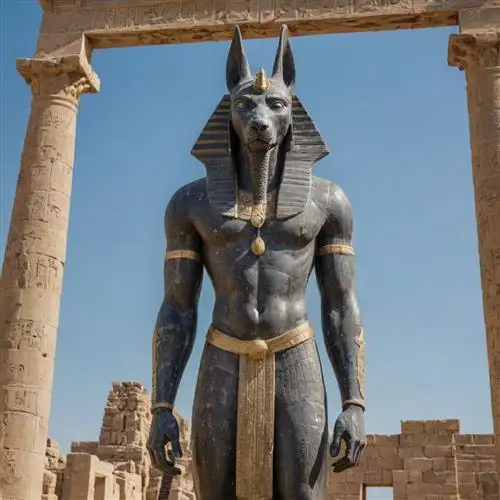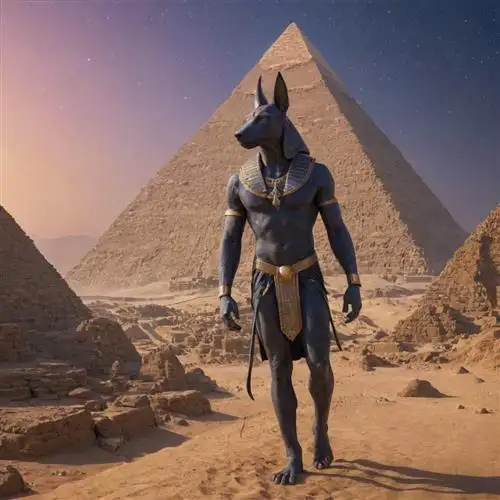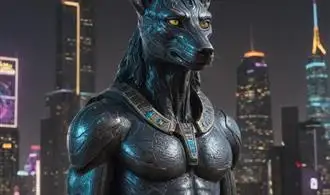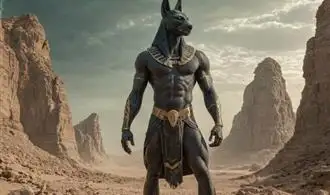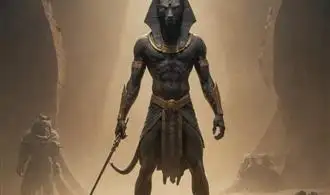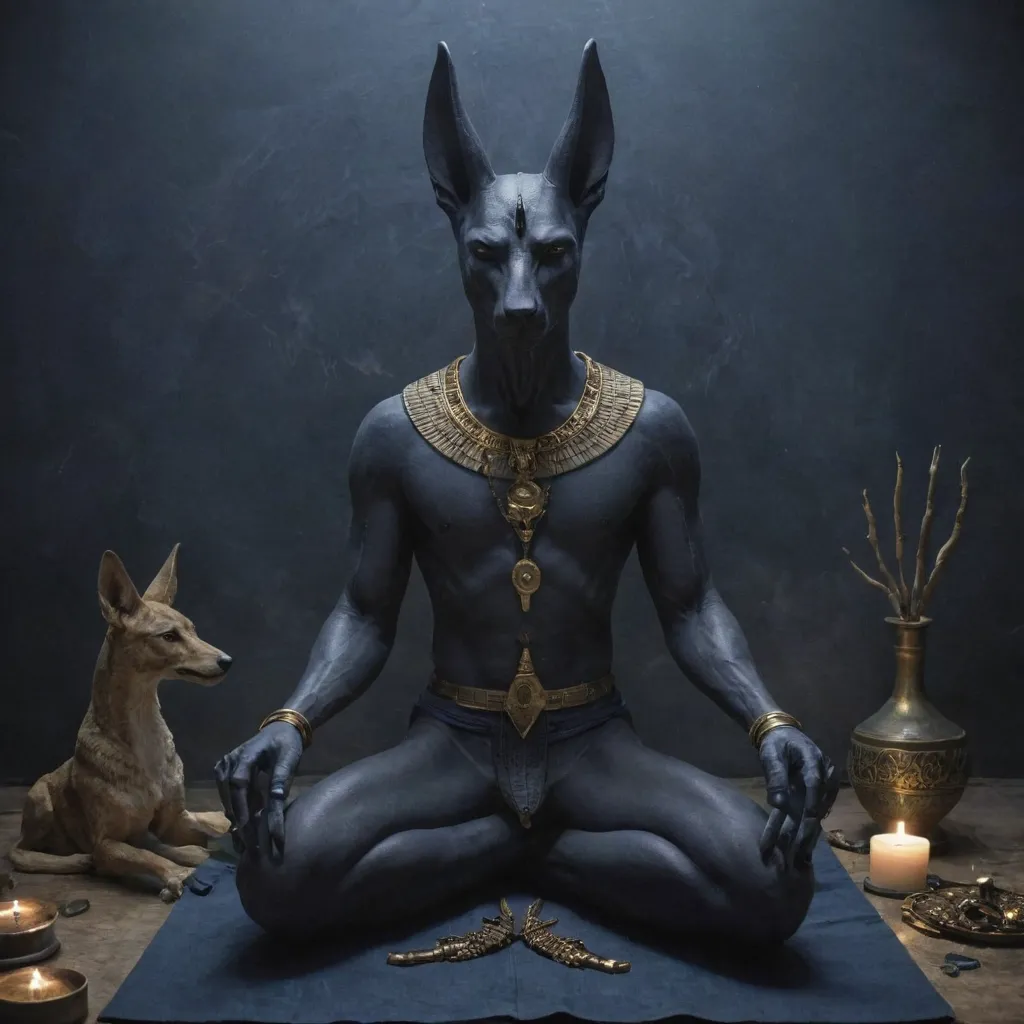
The Jackal-Headed God Anubis
The Jackal-Headed God Anubis is a central figure in ancient Egyptian mythology, revered for his role as the guardian of the dead and the embalming process. As one of the oldest deities in the Egyptian pantheon, Anubis has captured the imagination of scholars, historians, and those fascinated by the rich symbolism of this enigmatic figure.
Anubis is often depicted with the head of a jackal, a creature associated with the desert and the necropolis. This iconic representation reflects his role as the keeper of the dead, guiding the souls of the departed through the treacherous journey to the afterlife. The jackal-headed form also symbolizes Anubis' ability to traverse the boundary between the living and the dead, making him a powerful intermediary between the mortal and the divine realms.
At the heart of Anubis' significance lies his role in the embalming and mummification process. As the patron of the embalmer, Anubis was responsible for overseeing the intricate and sacred rituals that transformed the deceased into an immortal being, ready to embark on the next stage of their journey. The meticulous attention to detail and the reverence with which these rituals were performed underscored the importance of Anubis in the ancient Egyptian belief system.
Beyond his role as the guardian of the dead, Anubis was also associated with other important aspects of ancient Egyptian life. He was revered as a protector of the living, guarding against the dangers of the desert and the unknown. Additionally, Anubis was believed to be a judge of the dead, weighing the souls of the deceased against the feather of Ma'at, the goddess of truth and justice.
The symbolism of Anubis extends beyond his physical representation, delving into the deeper meanings and archetypes that he embodies. As a figure of transition and transformation, Anubis represents the cycle of life, death, and rebirth, and the importance of honoring the ancestral lineage and the journey of the soul. Discover the Fascinating History of Anubis Artwork to further explore the rich visual representations of this captivating deity.
Anubis and the Afterlife
Anubis, the enigmatic jackal-headed deity of ancient Egyptian mythology, is intrinsically linked to the realm of the afterlife. As the god of embalming and the protector of the dead, Anubis played a crucial role in guiding the deceased through the perilous journey to the afterlife. Understanding the depth of Anubis' symbolism and his relationship with the afterlife is essential for those seeking to fully grasp the significance of this powerful figure.
At the heart of Anubis' role in the afterlife lies his responsibility as the guardian of the mummification process. As the ancient Egyptians believed that a well-preserved physical form was necessary for the soul's transition to the afterlife, Anubis oversaw the careful preparation and embalming of the deceased. This meticulous process, which involved the removal of the internal organs and the application of various preservatives, was crucial in ensuring the deceased's successful passage to the next life.
But Anubis' involvement in the afterlife did not end with the mummification process. He was also tasked with weighing the heart of the deceased against the feather of truth, a crucial step in the judgment of the soul. This ritual, known as the "Weighing of the Heart," determined whether the individual had lived a life of virtue and righteousness, or if they had committed sins that would prevent them from entering the afterlife. Anubis, with his keen sense of justice and his ability to discern the truth, played a central role in this pivotal moment, guiding the soul towards its ultimate destiny.
Moreover, Anubis was believed to be the protector of the deceased, ensuring their safe passage through the perilous realms of the afterlife. As the guardian of the necropolis, he was responsible for safeguarding the tombs and the graves of the departed, shielding them from harm and ensuring their eternal rest. This protective role was crucial in the ancient Egyptian belief system, as the afterlife was seen as a complex and treacherous journey that required the guidance and protection of the divine.
Symbolism of Anubis in Ancient Egypt
The Symbolism of Anubis in Ancient Egypt is a rich and captivating topic that offers a glimpse into the profound beliefs and practices of the ancient Egyptians. Anubis, the jackal-headed deity, held a crucial role in the Egyptian pantheon, serving as the guardian of the dead and the embalming process.
In ancient Egypt, Anubis was believed to be the god responsible for the mummification and protection of the dead. He was the patron of the necropolis, the sacred area where the dead were buried, and was often depicted as a jackal or a man with a jackal's head. The jackal was chosen as Anubis' animal form due to the creature's association with the desert, where the dead were often buried, and its scavenging behavior, which was believed to be a part of the embalming process.
Anubis was also responsible for guiding the souls of the dead to the afterlife and ensuring that the proper rituals and ceremonies were performed. He was present during the weighing of the heart ceremony, where the deceased's heart was weighed against the feather of truth to determine their worthiness for the afterlife. If the heart was found to be pure, the deceased would be granted eternal life in the afterworld.
The symbolism of Anubis extended beyond his role as the guardian of the dead. He was also associated with healing, transformation, and the protection of the living. The ancient Egyptians believed that Anubis could intercede on their behalf, providing guidance and protection in times of need.
The worship of Anubis was widespread throughout ancient Egypt, with temples and shrines dedicated to him in various locations. The god was revered for his power and influence over the afterlife, and his image was often depicted on funerary objects, such as coffins, canopic jars, and amulets.
Anubis and the Mummification Process
Anubis, the jackal-headed Egyptian deity, played a crucial role in the mummification process, a sacred ritual that transformed the deceased into an eternal being. As the god of embalming and the protector of the dead, Anubis oversaw every step of this intricate process, ensuring the preservation of the physical form and the safe passage of the soul into the afterlife.
At the heart of the mummification process was the removal of the internal organs, a task known as evisceration. Anubis, through his priests, would carefully extract the heart, lungs, liver, and intestines, leaving the brain intact. These organs were then placed in canopic jars, each guarded by a different deity, ensuring their protection in the afterlife.
- Desiccation: The body was packed with natron, a natural salt compound that drew out moisture and prevented decomposition.
- Mummification: The body was wrapped in linen bandages, with Anubis' priests performing intricate rituals to protect the mummy.
- Amulet Placement: Symbolic amulets and talismans were placed within the wrappings to provide spiritual protection and ensure the deceased's safe passage to the afterlife.
Anubis' role extended beyond the physical transformation of the body. The god was also responsible for guiding the deceased's soul through the dangerous and treacherous afterlife, ensuring their successful judgment before the gods and their ultimate transformation into an eternal being.
Incorporating Anubis Symbolism into Your Life
Anubis, the ancient Egyptian deity associated with the afterlife, mummification, and the underworld, holds a powerful symbolism that can be harnessed to enrich our personal and spiritual lives. As a guide and protector of the dead, Anubis' influence extends beyond the realm of the departed, offering valuable insights and practices for the living. By understanding and embracing the symbology of Anubis, we can tap into the transformative energies of this enigmatic figure and integrate them into our daily experiences.
One of the primary ways to incorporate Anubis symbolism is through meditation and visualization. Visualize Anubis, the jackal-headed deity, standing as a sentinel at the threshold between the physical and spiritual realms. Imagine his piercing gaze, his steadfast presence, and the sense of protection and guidance he offers. As you breathe deeply, invite Anubis to be your companion, a guardian who will aid you in navigating the challenges and transitions of life.
Anubis is also closely associated with the process of transformation and rebirth. Consider this deity as a symbol of the necessary endings and beginnings that shape our personal growth. When faced with the death of a relationship, a career, or a cherished belief, invoke Anubis to guide you through the process of letting go and embracing the new. Visualize Anubis as the embalmer, carefully and meticulously preparing you for a metaphorical rebirth, stripping away the inessential and preserving the core of your being.
Another powerful way to incorporate Anubis symbolism is through the use of sacred objects and rituals. Incorporate Anubis-themed artwork, statues, or talismans into your living or working space, allowing his presence to permeate your environment. Engage in rituals that honor Anubis, such as lighting candles, offering incense, or performing symbolic gestures that align with his attributes of protection, transition, and the afterlife.
Furthermore, Anubis' role as a psychopomp, a guide of souls, can be invoked to assist in the healing of grief and the honoring of ancestors. When faced with the loss of a loved one, turn to Anubis for comfort and guidance, visualizing him as the guardian who will safely escort the departed to the afterlife. Engage in ancestral veneration practices, such as leaving offerings or speaking to your lineage, with Anubis as the benevolent intermediary.

